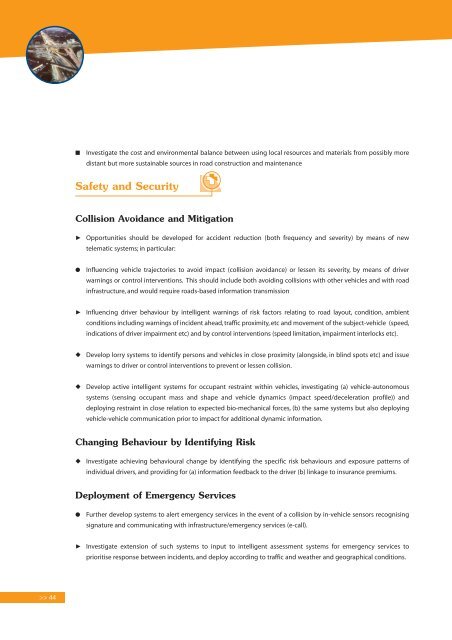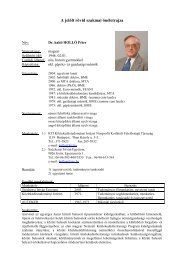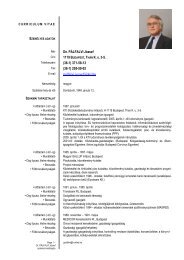VISION: Road Transport in Europe 2025 - FEHRL
VISION: Road Transport in Europe 2025 - FEHRL
VISION: Road Transport in Europe 2025 - FEHRL
You also want an ePaper? Increase the reach of your titles
YUMPU automatically turns print PDFs into web optimized ePapers that Google loves.
44<br />
■ Investigate the cost and environmental balance between us<strong>in</strong>g local resources and materials from possibly more<br />
distant but more susta<strong>in</strong>able sources <strong>in</strong> road construction and ma<strong>in</strong>tenance<br />
Safety and Security<br />
Collision Avoidance and Mitigation<br />
Opportunities should be developed for accident reduction (both frequency and severity) by means of new<br />
telematic systems; <strong>in</strong> particular:<br />
● Influenc<strong>in</strong>g vehicle trajectories to avoid impact (collision avoidance) or lessen its severity, by means of driver<br />
warn<strong>in</strong>gs or control <strong>in</strong>terventions. This should <strong>in</strong>clude both avoid<strong>in</strong>g collisions with other vehicles and with road<br />
<strong>in</strong>frastructure, and would require roads-based <strong>in</strong>formation transmission<br />
Influenc<strong>in</strong>g driver behaviour by <strong>in</strong>telligent warn<strong>in</strong>gs of risk factors relat<strong>in</strong>g to road layout, condition, ambient<br />
conditions <strong>in</strong>clud<strong>in</strong>g warn<strong>in</strong>gs of <strong>in</strong>cident ahead, traffic proximity, etc and movement of the subject-vehicle (speed,<br />
<strong>in</strong>dications of driver impairment etc) and by control <strong>in</strong>terventions (speed limitation, impairment <strong>in</strong>terlocks etc).<br />
◆ Develop lorry systems to identify persons and vehicles <strong>in</strong> close proximity (alongside, <strong>in</strong> bl<strong>in</strong>d spots etc) and issue<br />
warn<strong>in</strong>gs to driver or control <strong>in</strong>terventions to prevent or lessen collision.<br />
◆ Develop active <strong>in</strong>telligent systems for occupant restra<strong>in</strong>t with<strong>in</strong> vehicles, <strong>in</strong>vestigat<strong>in</strong>g (a) vehicle-autonomous<br />
systems (sens<strong>in</strong>g occupant mass and shape and vehicle dynamics (impact speed/deceleration profile)) and<br />
deploy<strong>in</strong>g restra<strong>in</strong>t <strong>in</strong> close relation to expected bio-mechanical forces, (b) the same systems but also deploy<strong>in</strong>g<br />
vehicle-vehicle communication prior to impact for additional dynamic <strong>in</strong>formation.<br />
Chang<strong>in</strong>g Behaviour by Identify<strong>in</strong>g Risk<br />
◆ Investigate achiev<strong>in</strong>g behavioural change by identify<strong>in</strong>g the specific risk behaviours and exposure patterns of<br />
<strong>in</strong>dividual drivers, and provid<strong>in</strong>g for (a) <strong>in</strong>formation feedback to the driver (b) l<strong>in</strong>kage to <strong>in</strong>surance premiums.<br />
Deployment of Emergency Services<br />
● Further develop systems to alert emergency services <strong>in</strong> the event of a collision by <strong>in</strong>-vehicle sensors recognis<strong>in</strong>g<br />
signature and communicat<strong>in</strong>g with <strong>in</strong>frastructure/emergency services (e-call).<br />
Investigate extension of such systems to <strong>in</strong>put to <strong>in</strong>telligent assessment systems for emergency services to<br />
prioritise response between <strong>in</strong>cidents, and deploy accord<strong>in</strong>g to traffic and weather and geographical conditions.






